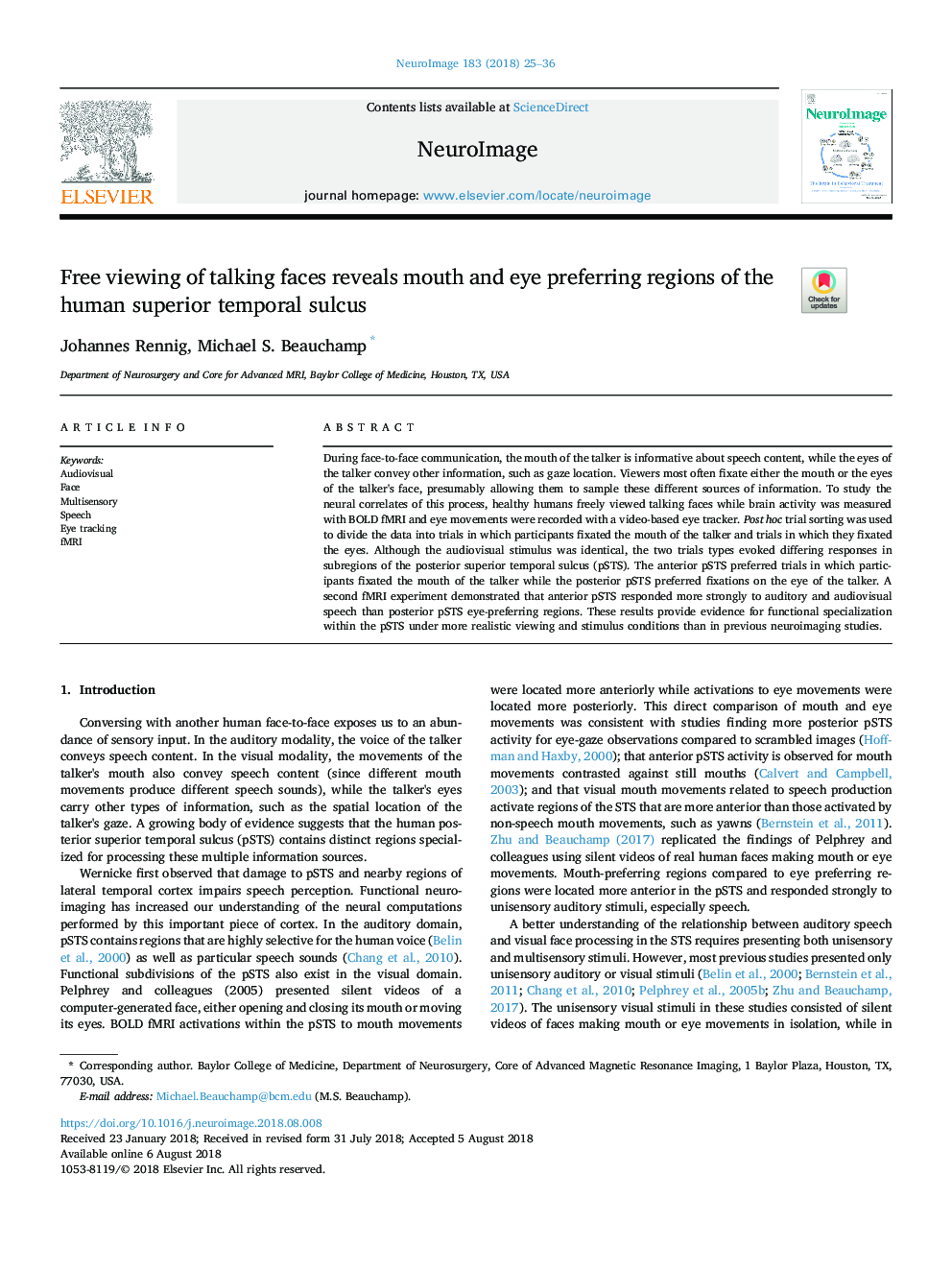| کد مقاله | کد نشریه | سال انتشار | مقاله انگلیسی | نسخه تمام متن |
|---|---|---|---|---|
| 8686575 | 1580829 | 2018 | 12 صفحه PDF | دانلود رایگان |
عنوان انگلیسی مقاله ISI
Free viewing of talking faces reveals mouth and eye preferring regions of the human superior temporal sulcus
ترجمه فارسی عنوان
تماشای رایگان از چهره های صحبت می کند که مناطق ترجیحی دهان و چشم را از سوزن عمیق انسان به دست می دهد
دانلود مقاله + سفارش ترجمه
دانلود مقاله ISI انگلیسی
رایگان برای ایرانیان
کلمات کلیدی
موضوعات مرتبط
علوم زیستی و بیوفناوری
علم عصب شناسی
علوم اعصاب شناختی
چکیده انگلیسی
During face-to-face communication, the mouth of the talker is informative about speech content, while the eyes of the talker convey other information, such as gaze location. Viewers most often fixate either the mouth or the eyes of the talker's face, presumably allowing them to sample these different sources of information. To study the neural correlates of this process, healthy humans freely viewed talking faces while brain activity was measured with BOLD fMRI and eye movements were recorded with a video-based eye tracker. Post hoc trial sorting was used to divide the data into trials in which participants fixated the mouth of the talker and trials in which they fixated the eyes. Although the audiovisual stimulus was identical, the two trials types evoked differing responses in subregions of the posterior superior temporal sulcus (pSTS). The anterior pSTS preferred trials in which participants fixated the mouth of the talker while the posterior pSTS preferred fixations on the eye of the talker. A second fMRI experiment demonstrated that anterior pSTS responded more strongly to auditory and audiovisual speech than posterior pSTS eye-preferring regions. These results provide evidence for functional specialization within the pSTS under more realistic viewing and stimulus conditions than in previous neuroimaging studies.
ناشر
Database: Elsevier - ScienceDirect (ساینس دایرکت)
Journal: NeuroImage - Volume 183, December 2018, Pages 25-36
Journal: NeuroImage - Volume 183, December 2018, Pages 25-36
نویسندگان
Johannes Rennig, Michael S. Beauchamp,
